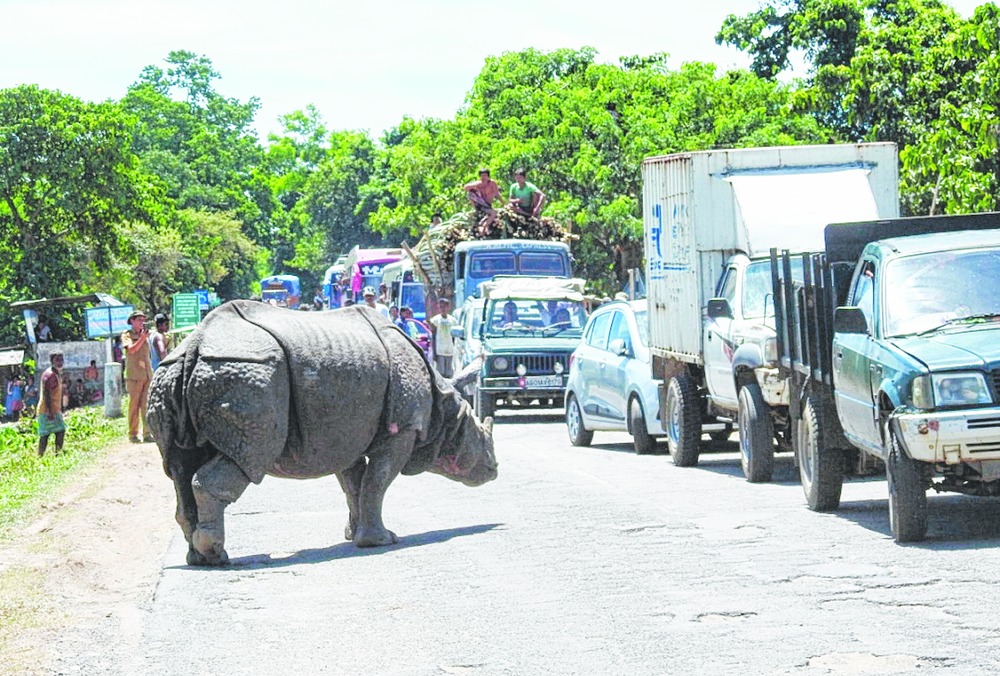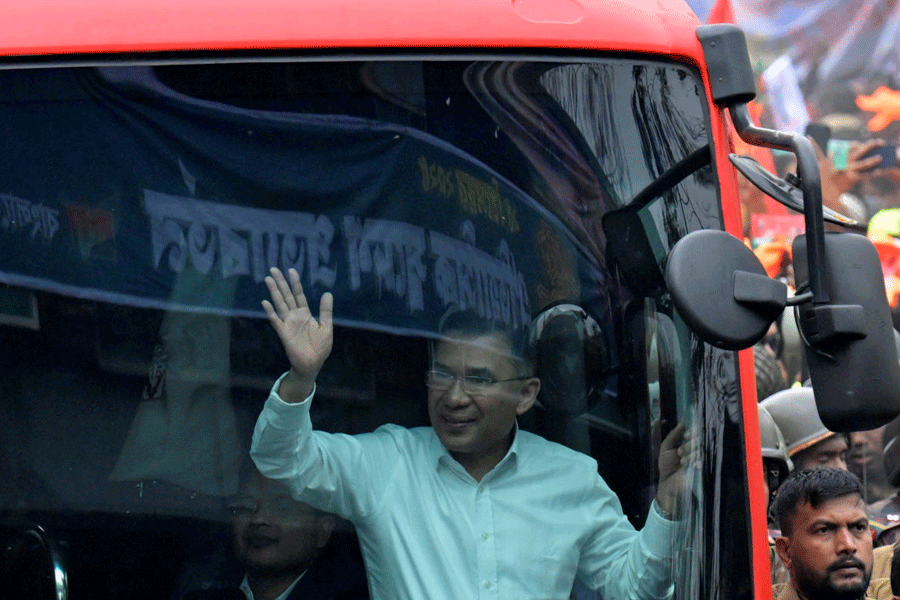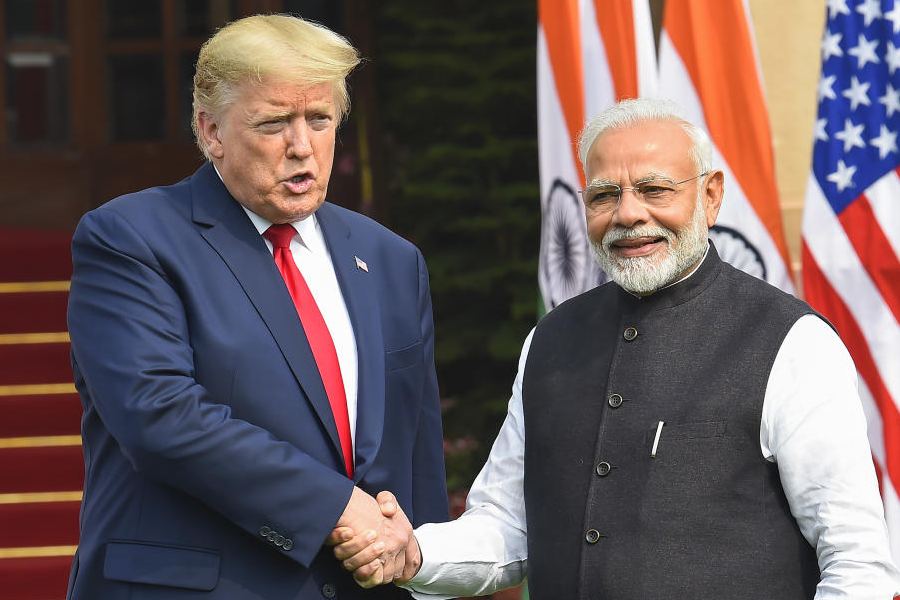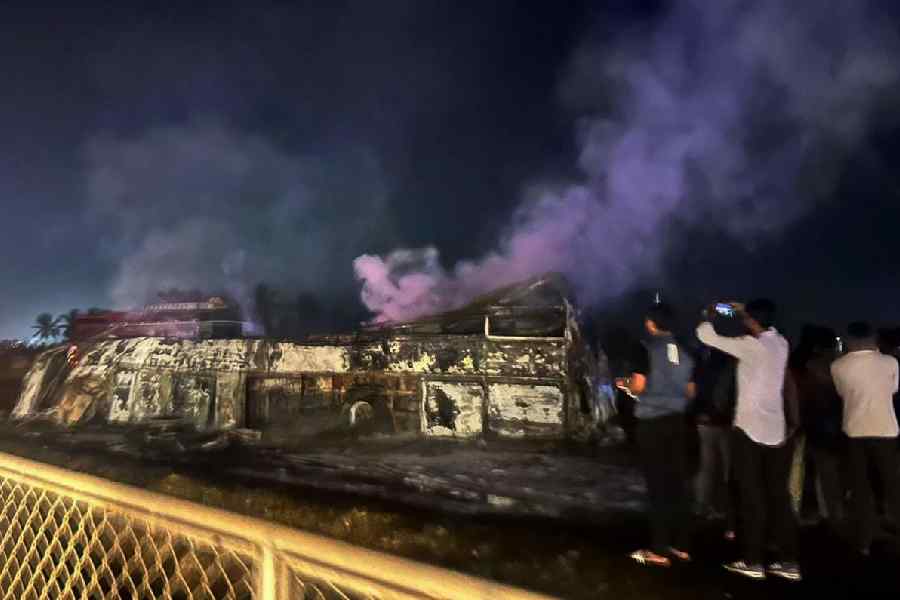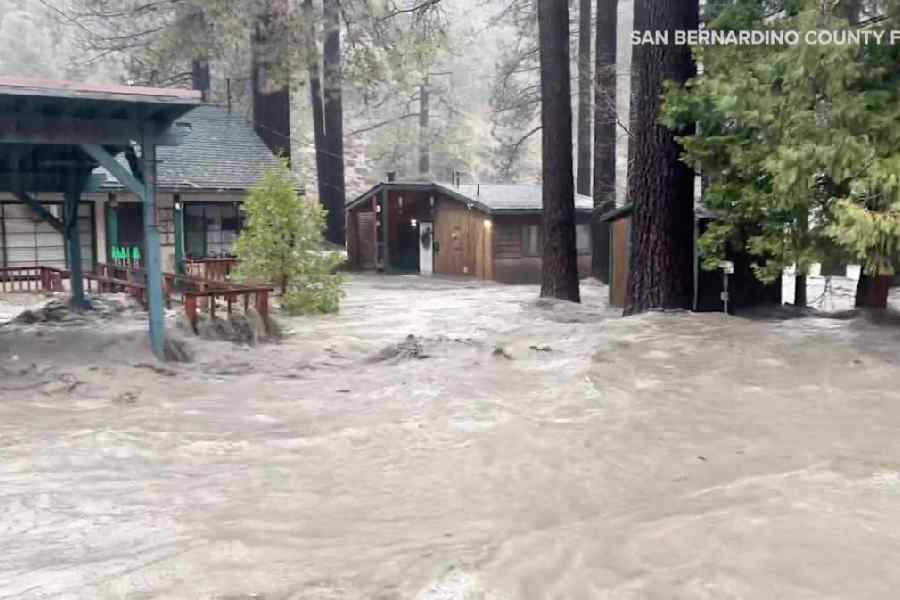TRAFFIC-STOPPER

Gohpur Aug. 2: Gopal Pradhan's 80-year-old father breathed his last in surroundings that were far from peaceful. The waters of the Brahmaputra that had inundated almost an entire state was rising in his small thatched house in Datkhala, an obscure hamlet of farmers who had learnt to live hand-to-mouth with the perils of a giant river.
July 15, though, was different. "The water simply rushed into our house that day following a breach in an embankment at Luitmukh, about 15km from where we live. The water devoured just about everything in its path. It was afternoon and we just had lunch. The water rushed here in less than two hours and we had nowhere to go. The condition of my father Dhan Bahadur, who was not keeping well for quite some time, deteriorated rapidly and he died," said Pradhan, 35. "We suffered two tragedies on that day: I lost my father and my home."
Seven kilometres from Gohpur, 289km east of Guwahati, the Brahmaputra scripted yet another disaster in this round of floods, the third in count, one that has devastated 2.6 million people and killed 31. It was within a matter of hours that 150 families of Datkhala found themselves clutching on to each other as they struggled to higher ground, in this case the road that takes them to National Highway 15, which connects Assam to Arunachal Pradesh. For the Pradhans, it was cataclysmic; they also carried with them their dead.

Picture by Pankaj Sarma
"Besides the road we were on, there was no land in sight and no cremation ground. There could be no ritual. We gathered what we could: small branches, leaves, wooden boxes salvaged from the waters ...anything that was dry," said a teary-eyed Pradhan. "By the time the cremation was over it was late night. Soon after the officials came and shifted us to a relief camp about a kilometre away at Datkhala Lower Primary School."
In their hour of darkness, though, the people of Datkhala had rallied. Eleven days after he died, Dhan Bahadur's shraddh was performed at the relief camp.
Gohpur is part of Biswanath, a new district that was carved out of Sonitpur this year. A new administration though has not meant relief from floods.
"It is bad enough that you have to lose someone in such ugly circumstances," said Pradhan, sitting on a bench at the camp with his brother Jiban. "But that you cannot give him a decent funeral or shraddh the way it is meant to be done for the safe journey of his soul, is what haunts you every day."
The waters have since receded at Datkhala; the Brahmaputra, for now, has lost its fury. By yesterday, most of the camp inmates had gone back to their homes to try and salvage some of the remains. The Pradhans, though, haven't returned. "I will go check the water in our home. It's knee-deep now. Going home from the relief camp will also mean that we will no longer get the food we get here. My six bighas of paddy are also gone. I have nothing and don't know what will happen now. I am worried the camp will be closed down soon," said Pradhan.
When he does go back home, though, he will carry his father's ashes with him, to immerse the urn sometime in the years to come, in the river.
Kaziranga limps back: Floodwaters are receding in Kaziranga National Park, which has already lost 310 animals, including 21 rhinos, in the current wave.
A press communiqué said out of the 130 inundated camps, 70 are still under water. Out of the 21 rhinos which died, 10 are calves ranging from 2-6 months.
"Actual assessment will be carried out later this month," Das said, adding that 106 animals have been rescued so far. Of the nine rhinos rescued, eight are currently undergoing treatment at the Centre for Wildlife Rehabilitation and Conservation (CWRC).
Flood relief
ONGC, Indian Oil Corporation, Oil India Limited, Bharat Petroleum Corporation Limited, Hindustan Petroleum Corporation Limited, GAIL and Numaligarh Refinery Ltd today together contributed Rs 15 crore to the Chief Minister’s Relief Fund to tackle the floods.
NGO move
Save the Children, an international NGO, has launched its child-centric emergency flood response project in Dhemaji, Lakhimpur and Majuli in Upper Assam.
The NGO will provide tarpaulin, hygiene kits, bedsheets, floormats, water and food baskets and organise health camps and sanitation support to vulnerable households.
Chief executive officer of the NGO, Thomas Chandy, said in a statement today that they were ready to help the government in the emergency response for the flood victims.
“We maintain that children can’t wait and therefore an all-out response by the government and civil society is required. Corporate groups and individuals can do their bit by supporting those organisations which have a proven track-record in dealing with such emergencies.”
Save the Children sought to coordinate with the ministry of home affairs after Union home minister Rajnath Singh appealed to NGOs to join hands in relief and rehabilitation during his visit to Assam on Saturday.
ADDITIONAL REPORTING BY OUR BUREAU

